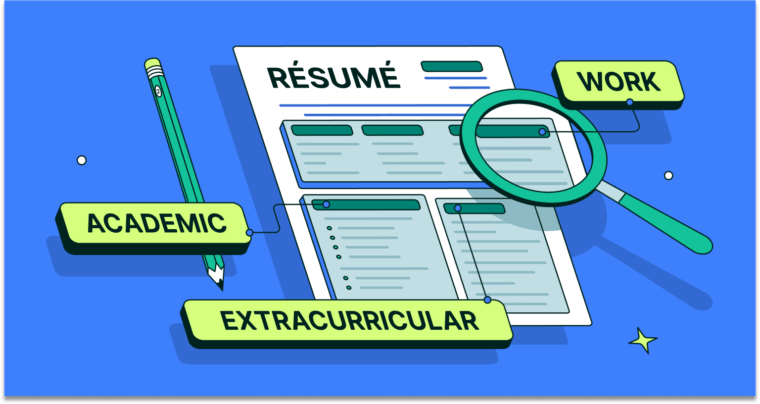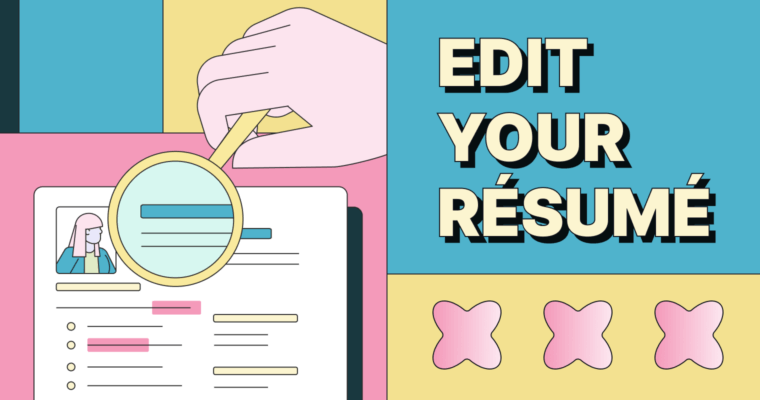
In the midst of a record-low unemployment rate, the prospects for job seekers—especially for those with in-demand technical skills—have almost never been better. Today, there are more jobs available than qualified candidates, meaning job seekers have their pick of the litter when it comes to choosing where they want to work next.
Just because companies are urgently seeking employees, though, doesn’t mean they’ll hand out jobs to anyone who wants them. Above all, recruiters are looking to hire people who are the right fit, so it’s still on job seekers to prove that they’re worth the investment.
The best way to communicate your talent is to craft an impressive technical résumé. With the right mix of relevant experience, accomplishments, and skills, recruiters will be knocking down your door with opportunities. But what exactly are technical recruiters looking for in résumés, and how can you best incorporate that?
To find out, we reached out to the Talent Acquisition team at Northrop Grumman—here’s what they had to say.
1 Get Straight to the Point
A fancy-looking résumé won’t mean a thing if it buries what recruiters really want to see. “A candidate has twenty to thirty seconds to capture a recruiter’s attention—so make sure your résumé is well-formatted, easy to read, and that your most noteworthy accomplishments/skills are captured near the top of page one,” says Kortnie Sullivan, a Talent Acquisition Business Partner at Northrop Grumman, who primarily recruits information technology professionals.
“When looking at a technical résumé, I look to see if the candidate’s technical skills/tools match or are comparable to the needs of the position. I also go over the two most recent positions to see if the candidate has experience doing the same or similar tasks that they would be doing in the new role.” shares Albrenna Richardson, Talent Acquisition IT Recruiter.
Other important things to prominently feature are education, certifications, and clearance level, if you have one, says Melissa Wallace, a Talent Acquisition Business Partner who focuses mainly on engineering and other technical positions.
“I want to be able to quickly glance at a résumé and make sure they meet the criteria for the level of position I’m looking for and then if they do, I’ll read their résumé more closely,” Wallace adds.
2 Tailor Your Résumé to Each Application
A generic résumé is a guaranteed way to lose a recruiter’s interest, so make sure that you take a good look at the specific job description(s) you’re applying to in order to highlight what matters most.
“Taking time to build a strong résumé that is customized to the position gives you more control in the process. It takes the guessing away from the recruiter and hiring manager and makes a clear, immediate case that you should be interviewed,” explains Jessica DeVilbiss, a Talent Acquisition Business Partner at Northrop Grumman focusing on aerospace systems. “It’s worth the time investment for roles that you are interested in and targeting for your next step.”
In particular, DeVilbiss recommends that job seekers “read the specific skills that are listed in the position and include the applicable skills in your résumé.”
And when detailing your work history, make sure to connect what you’ve done in previous roles with the job you’re applying to.
“I like clearly-written résumés that allow the reader to have a thorough understanding of what they did and how it relates to the position that they are applying for,” Richardson says.
3 Give Context to Your Skills
While it’s important to share your skills and the technical tools you use, it’s not enough to simply list them without providing any additional information. Richardson recommends that candidates “provide specific detail on how they have used those tools under the description of their current and past positions.”
“As a recruiter, I am looking to see that the tools you listed are something that you have actually used in your work or class projects and how you have used them. So instead of simply listing Java and Linux in the skills section, add a statement like this: ‘I developed X website using Java and Linux on the backend.’”
You might also want to consider detailing exactly how familiar you are with the various tools and skills you mention.
“It’s especially helpful if candidates rank their skill level with technologies from beginner to expert level,” DeVilbiss explains.
4 Quantify Your Success
Beyond giving context to your skills, you’ll also want to give context to your achievements at work. One of the best ways to do that is by describing the concrete results of your efforts in your work history bullet points.
“I really like when a technical résumé calls out specific examples using real data and numbers. It immediately builds credibility with me and the hiring manager,” DeVilbiss shares.
When considering which sorts of metrics to include, “think about what would be important to an employer,” Wallace recommends. “If you saved the company money by something you were responsible for, by all means, make sure it is on your résumé.”
A few example bullet points from Sullivan include:
- Accomplished X results in X number of days
- Ensured X customer requirements were met
- Utilized X training/experience to stay on schedule and under budget
In addition to numbers, percentages can tell a powerful story, especially if your experience is from a company of a different size than where you are applying. For example, “saved the company 15 percent on annual expenses in X category due to Y activity/process.”
5 Sweat the Small Stuff
When looking at a technical résumé, recruiters primarily care about relevant skills and experience—but that doesn’t mean they won’t notice typos, a clunky design or other common résumé mistakes.
One issue in particular that job seekers should watch out for is accidentally name-dropping the wrong company. “There is nothing more cringe-worthy than a candidate expressing interest in your competitor when applying for a job at your company,” Wallace says.
Another tip to keep in mind: “Spell out technical acronyms,” Richardson says. “Technology is continuing to evolve at a rapid rate and it will assist the technical recruiter if the technology is clearly stated. Acronyms can mean one thing at one company and a different thing at another.”
6 Don’t Forget Soft Skills
Familiarity with the right skills and tools is critical for technical roles, but soft skills like communication, leadership, and collaboration are often equally important. But when it comes to including soft skills on your résumé, it’s best to be subtle about it.
“When highlighting soft skills, make them bulleted and targeted based on what the role is seeking, and then use facts and figures, if possible, to demonstrate your competency,” DeVilbiss advises. “For example, if you are saying you are a skilled lead, talk about the number of people you’ve led and mentored and/or your specific achievements in a project.”
A couple more ways you can show off your soft skills: “List a handful of extracurricular activities you are involved in and if you’ve had any leadership in those roles,” and “list some accolades you’ve received; for example, a top performance rating or an on-the-spot-recognition,” Wallace says.
7 Keep it Short & Sweet
One of the biggest mistakes Sullivan sees in technical résumés? Unnecessary length. “I tell candidates to keep their résumé to two pages—a recruiter’s eyes start to glaze over if it goes beyond two pages,” Sullivan explains. “And really, that first ‘block’ of experience/work history on page one is what needs to catch the recruiter’s eye.”
There’s no doubt that writing a technical résumé is challenging. After all, it’s no easy feat to condense your years of experience, achievements and skills into one short document. But the importance of résumés in the job search can’t be overstated. They’re the number one tool you have to catch a recruiter’s attention and convince them that you’re worth spending time on, so a little extra time spent tweaking it is well worth the effort. Keep these tips in mind, and you’ll be well on your way to an impressive technical résumé — and hopefully, the job of your dreams.
Related Links





